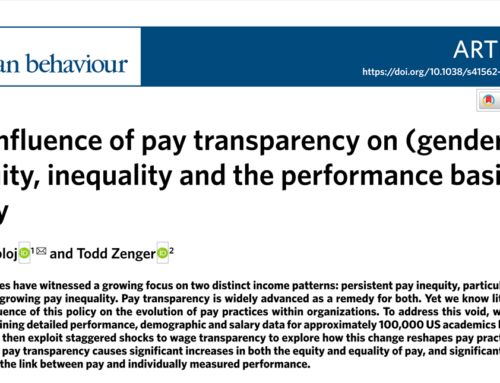 AARC scholars have a manuscript in review about the graying of the American professoriate (see the preprint here: 10.31235/osf.io/vznty). As we explored the publication patterns of early career, middle career, and senior scholars, a basic question emerged that we didn’t include in our original study: are some academic fields home to “older” faculty than others, on average?
AARC scholars have a manuscript in review about the graying of the American professoriate (see the preprint here: 10.31235/osf.io/vznty). As we explored the publication patterns of early career, middle career, and senior scholars, a basic question emerged that we didn’t include in our original study: are some academic fields home to “older” faculty than others, on average?
The table below shows the 10 “oldest” fields in the Academic Analytics database (version AAD2019-1470); we infer age from the year each scholar earned their Ph.D. (or other terminal degree, MFA, MBA, etc.) for all ranked professors in each of 171 fields:
| Field | Mean Ph.D. Year | Median Ph.D. Year |
|---|---|---|
| Biophysics | 1991.9 | 1993 |
| Immunology | 1993.3 | 1994 |
| Microbiology | 1993.6 | 1994 |
| Molecular Biology | 1993.7 | 1994 |
| Molecular Genetics | 1993.6 | 1994 |
| Oral Biology and Craniofacial Science | 1994.8 | 1994 |
| Toxicology | 1993.8 | 1994 |
| Anatomy | 1993.7 | 1995 |
| Biochemistry | 1994.2 | 1995 |
| Botany/Plant Biology | 1995.0 | 1995 |
Surprisingly, all 10 of the oldest fields are in the relatively fast-paced biological/biomedical sciences. We expected academic age to correspond to the pace of publication, but we failed to account for an important component of the career trajectory of many life scientists – the postdoctoral phase.
In light of the data above, we now hypothesize that life scientists aren’t actually older than their peers in other fields, just that the youngest scholars aren’t part of the sample – they are doing postdocs (see, e.g., this Nature news article from 2015).
For comparison, here are the mean and median Ph.D. years for some other common fields:
| Field | Mean Ph.D. Year | Median Ph.D. Year |
|---|---|---|
| Physics | 1994.6 | 1996 |
| English Language and Literature | 1998.0 | 1999 |
| History | 1998.3 | 2000 |
| Anthropology | 1999.2 | 2001 |
| Economics | 1999.4 | 2002 |
| Computer Science | 2000.5 | 2002 |
As is always the case, interpreting data across disciplines requires nuance. Faculty members, university administrators, and other committee members charged with interdisciplinary comparisons must always be cautious – the data themselves often conceal important field-level differences that aren’t obvious at first glance.





